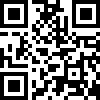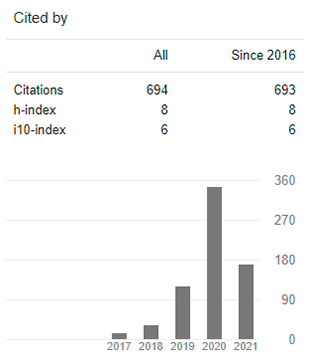Advertising Efficiency in Road Safety Prevention Campaigns
DOI:
https://doi.org/10.29394/scientific.issn.2542-2987.2017.2.6.8.154-173Keywords:
evaluation, accident prevention, education and road safety campaignsAbstract
This paper addresses the importance of the results evaluation processes in the education and road safety campaigns, although they have achieved remarkable progress in praxis, evidenced a lack of information as to the relevance and suitability of the tools of communication in prevention. The objective was to validate an education and road safety campaign implemented by the Municipal Transit and Transport Company of the city of Cuenca (Ecuador) in 2014, for which qualitative and quantitative techniques were used, choosing a stratified probabilistic sample of 304 university students, (age: 15-39). The data collection instruments were: focus group, questionnaire and statistical records, interpreted through content analysis and descriptive statistics. The findings indicate that the most frequent perception about the causes of accidents is: alcohol consumption, speeding, cell phone use. Likewise, the campaign "Best to Prevent" obtained a level of generalized recognition, but it was the younger ones who received more influence of their content of communication. Results that corroborate that the methods of motivation and persuasion do affect the attitude changes, which influences the transformation towards a culture of road prevention.
Downloads
References
Agencia Nacional de Tránsito (2015). Estadísticas de transporte terrestre y seguridad vial. Recuperado de: http://www.ant.gob.ec/index.php/noticias/estadisticas#.Vk9KEt8rJp9
Agencia Makma Fill. (2014). Studio Creativo Makmafill Cía, Ltda. Cuenca, Ecuador.
Empresa Pública Municipal de Movilidad, Tránsito y Transporte de Cuenca (2015). Estadísticas de accidentes de accidentes, heridos y fallecidos por accidentes de tránsito. (2013-2014).
Hamuid, A. y Varela, M. (2012a,b). La técnica de grupos focales. Investigación en Educación Médica. 2(1): 55-60.
Hernández, S., Fernández, C. y Baptista, P. (2014a,b). Metodología de la Investigación. México: McGraw-Hill.
Instituto Nacional de Estadística y Geografía. (2013). Diseño de Cuestionarios. México: Instituto Nacional de Estadística y Geografía.
Lerma, C. (2014). Desde la publicidad como objeto poco digno de interés académico, a la publicidad como elemento constitutivo de la cultura. Diálogos. De la Comunicación. Julio-diciembre, pp. 1-16.
Organización Mundial de la Salud. (2004). Informe mundial sobre prevención de los traumatismos causados por el tránsito. Recuperado de: http://www.who.int
Planzer, R. (2005). CEPAL (Naciones Unidas) Serie: Recursos Naturales e infraestructura. Santiago de Chile: CEPAL.
Papí, N. (2011a,b). La eficacia publicitaria de las campañas sobre la Igualdad de género: análisis de la codificación y del plan de medios. Alicante: Universidad de Alicante.
Sánchez, M. (2013). La dicotomía cualitativo-cuantitativo: posibilidades de integración y diseños mixtos. Campo Abierto, vol. monográfico, pp. 11-30.
Senovilla, S. (2014). Análisis de la comunicación publicitaria de Apple: La construcción de imagen de marca a través de la creatividad. Tesis de grado de Licenciatura no publicada. Universidad de Valladolid: España.
Solano, D. (2015). Estrategias de comunicación y educación para el desarrollo sostenible. Santiago de Chile: UNESCO.
Wells, W., Morirarty S., Burnett, J. (2007). Publicidad: principios y práctica. México DF: Pearson Educación.
Downloads
Published
How to Cite
Issue
Section
License
Copyright (c) 2017 INDTEC, C.A.

This work is licensed under a Creative Commons Attribution-NonCommercial-ShareAlike 4.0 International License.
The content of the journals of this site, are under a Creative Commons Attribution-Noncommercial-Share Alike 4.0 International License.













